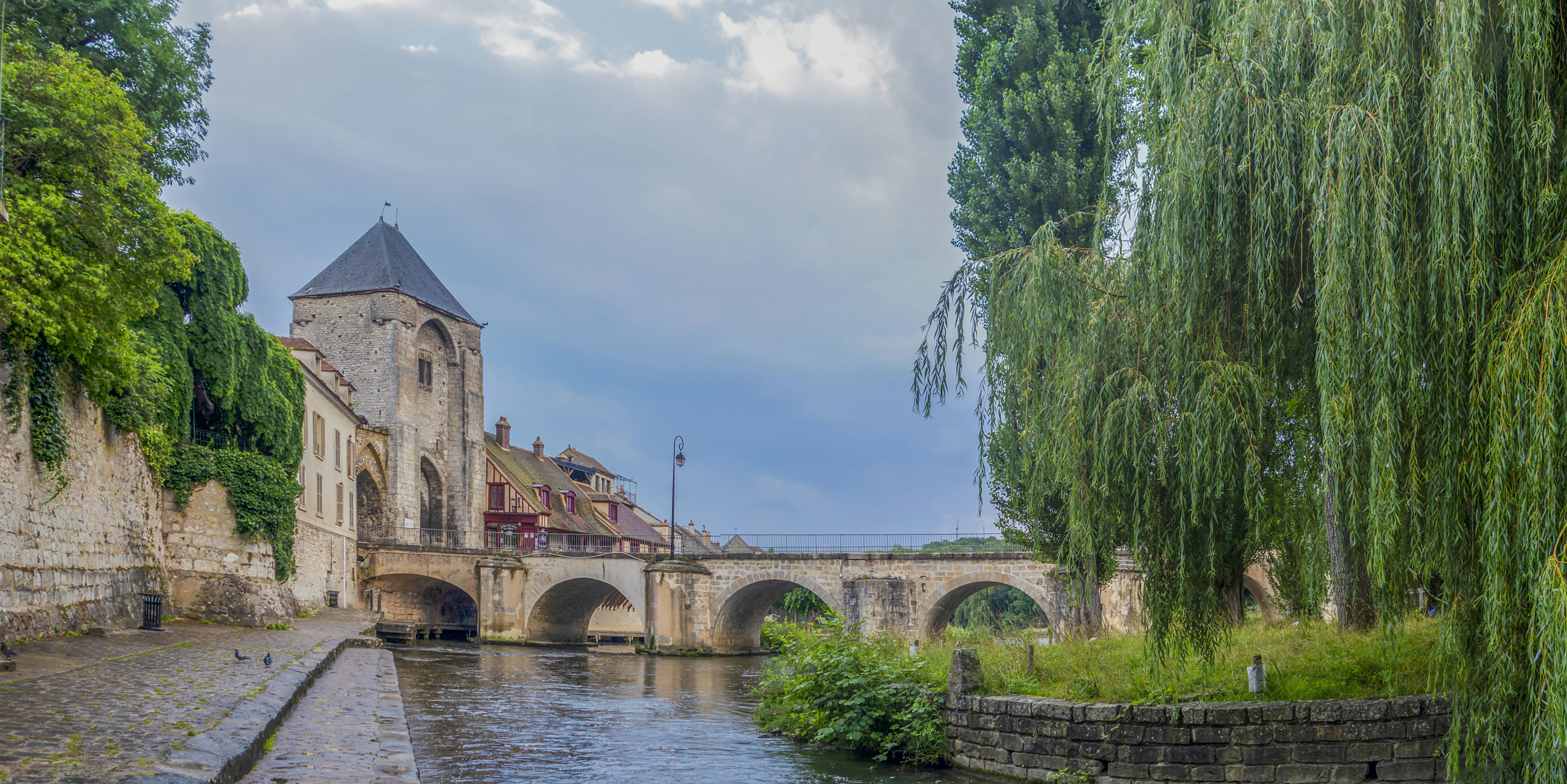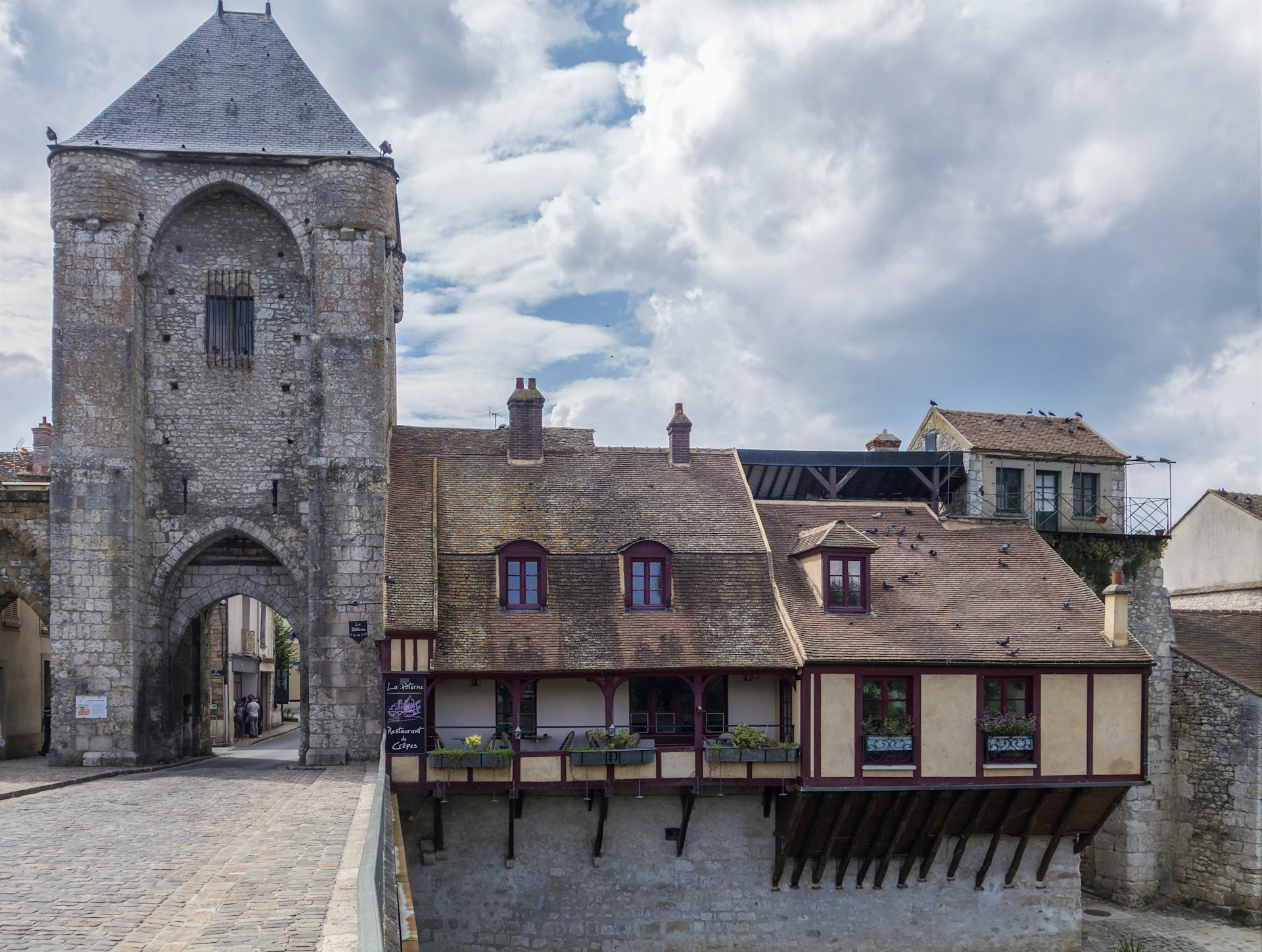Montereau-Fault-Yonne: Where rivers and history converge
At the confluence of the Seine and Yonne rivers, a town of quiet charm and rich history can be found. Montereau-Fault-Yonne, often overlooked by travelers rushing between Paris and Burgundy, rewards those who pause to explore its picturesque streets and absorb its centuries of stories. This small French commune, with its blend of medieval heritage and modern resilience, offers a glimpse into the authentic heart of the Île-de-France region.

A Strategic Location
The strategic importance of Montereau-Fault-Yonne's location has been recognized since ancient times. The town's position at the meeting point of two major rivers has made it a coveted site for centuries. This advantageous geography has been both a blessing and a curse, bringing prosperity through trade but also attracting the attention of warring factions throughout history.
The town's name itself reflects its unique position. "Montereau" is derived from the Latin "monasteriolum," meaning "little monastery," while "Fault-Yonne" refers to its location at the "fault" or end of the Yonne River where it joins the Seine. This linguistic blend encapsulates the town's dual nature as both a place of quiet reflection and a crucial crossroads.
A Stage for History
Montereau-Fault-Yonne's past is intertwined with some of the most dramatic moments in French history. In 1419, the town's bridge over the Yonne became the site of a pivotal event in the Hundred Years' War. It was here that John the Fearless, Duke of Burgundy, was assassinated during a meeting with the future Charles VII of France. This act of violence deepened the rift between the Burgundians and the Armagnacs, prolonging the conflict that had already ravaged France for decades.
Centuries later, Montereau-Fault-Yonne once again found itself at the center of historical events. In 1814, Napoleon Bonaparte fought one of his last battles here during his desperate campaign to defend France against the allied forces. The town's strategic bridge was once more a focal point, with fierce fighting taking place as Napoleon sought to secure his route back to Paris.
Architectural Treasures
Despite the ravages of time and conflict, Montereau-Fault-Yonne has managed to preserve several notable architectural gems. The Église Notre-Dame-et-Saint-Loup, a Gothic church dating back to the 12th century, dominates the town's skyline. Its imposing bell tower and intricate stone carvings serve as a testament to the skill of medieval craftsmen.
Not far from the church, the Priory of Saint-Martin offers another glimpse into the town's religious heritage. This former monastery, now partially converted into a museum, houses a collection of artifacts that tell the story of Montereau-Fault-Yonne's monastic past.
A Town Reborn
Like many small French towns, Montereau-Fault-Yonne faced challenges in the post-war era as traditional industries declined. However, the town has shown remarkable resilience, reinventing itself for the 21st century while still honoring its heritage. The old town center has been carefully restored, its narrow streets and half-timbered houses offering a charming backdrop for cafes, boutiques, and artisanal shops.
The town's commitment to preserving its natural environment is evident in the beautifully maintained parks and riverside walkways. The confluence of the Seine and Yonne provides a picturesque setting for leisurely strolls and outdoor activities, attracting both locals and visitors seeking a peaceful retreat from urban life.
Cultural Life
Despite its small size, Montereau-Fault-Yonne boasts a vibrant cultural scene. The town hosts several festivals throughout the year, celebrating everything from medieval history to contemporary arts. The annual Confluences festival, held in the summer, brings together musicians, artists, and performers from across France and beyond, transforming the town's streets and squares into a lively open-air venue.
The local market, held twice weekly, is another highlight of Montereau-Fault-Yonne's cultural calendar. Here, the bounty of the surrounding countryside is displayed in all its glory, with stalls overflowing with fresh produce, artisanal cheeses, and regional specialties. It's a place where the town's past and present converge, as age-old traditions of French gastronomy are kept alive by a new generation of producers and consumers.
Looking to the Future
As Montereau-Fault-Yonne moves forward, it does so with a keen awareness of its rich heritage and a commitment to sustainable development. Efforts are being made to balance preservation with progress, ensuring that the town remains both a living museum of French history and a vibrant, modern community.
The town's location, once prized for its military significance, now serves as an asset in a different way. Situated just 80 kilometers southeast of Paris, Montereau-Fault-Yonne is increasingly seen as an attractive option for those seeking to escape the hustle and bustle of the capital without sacrificing access to urban amenities.

In Montereau-Fault-Yonne, the past is not simply preserved; it is lived and breathed, forming an integral part of the town's identity and future. As visitors wander its streets, cross its historic bridges, or simply sit by the riverside watching the waters of the Seine and Yonne mingle, they are invited to become part of this ongoing story – a tale of resilience, reinvention, and the enduring charm of small-town France.
For those seeking to explore more of France's hidden gems, a journey to Strasbourg offers another captivating glimpse into the country's rich tapestry of history and culture. Like Montereau-Fault-Yonne, it's a place where the past and present intertwine, creating an unforgettable experience for all who visit.
Related articles
Show all
Boat activities on Cote d'Azur - France
The French Riviera, also known as the Cote d'Azur, is found on France's south-east coast and overlooks the glistening Mediterranean Sea. Known for its dazzling sand beaches, upmarket resort towns, and glamorous casinos, the Cote d'Azur has been a popular holiday destination with some of the world's wealthiest travelers since the 18th century. While boutique shops and Michelin-starred restaurants are certainly points of interest on the coast, one of the biggest draws is the array of water-based activities available. From yacht rentals, private boat tours, parasailing excursions, water sport rentals, and jet ski hire, the list of aqua-excursions is endless! Our simple guide to boat rental on the French Riviera takes a look at the different watersports available along the coast and the range of yacht and boat rentals available. After all, no visit to the Cote d'Azur can pass by without a day at sea.
FRANCE

Best 15 things to do in Saint-Paul-de-Vence
Perched atop a sun-drenched hill in the French Riviera, a medieval village stands frozen in time, its stone walls whispering tales of artists, lovers, and dreamers. This enchanting haven has inspired countless creatives and captivated visitors for generations. As one wanders through its winding cobblestone streets, the past and present intertwine, creating an atmosphere that must be experienced to be truly understood.
Saint-Paul-de-Vence - FRANCE

Best 15 things to do in Épernay
In the heart of France's Champagne region, a town can be found where bubbles rise not just in flutes but in the very spirit of the place. Streets lined with elegant mansions tell tales of centuries past, while deep beneath the chalky soil, millions of bottles await their moment to shine. Here, tradition and luxury intertwine, creating an experience that tantalizes all the senses. Welcome to a world where every pop of a cork celebrates life's finest moments.
Épernay - FRANCE

Top 15 things to do in Antibes
The French Riviera has long been revered as a playground for the rich and famous, but hidden among its glittering coastline lies a gem that offers a more authentic taste of Provençal life. With its sun-drenched beaches, winding medieval streets, and vibrant cultural scene, this charming coastal town beckons travelers to experience the true essence of the Côte d'Azur. From exploring ancient fortifications to indulging in fresh Mediterranean cuisine, a wealth of experiences awaits those who venture beyond the well-trodden tourist paths.
Antibes - FRANCE

The medieval town of Eze
The French Riviera is one of the best vacation spots in the world. If you’ve never been there, you don’t know what you’re missing. Èze is located along the Côte d’Azur, with the town running from the Èze-sur-Mer to the Èze Village. It’s a commune of sorts, replete with both beaches along the Mediterranean to a medieval village. If you’re looking for a destination, this may be the perfect spot for you.
Eze - FRANCE

Top 15 things to do in Nantes
In the heart of western France, a city of contrasts awaits discovery. Where history and innovation intertwine, where art breathes life into abandoned spaces, and where the Loire River whispers tales of maritime glory. This enchanting destination invites travelers to embark on a journey through time, imagination, and culinary delights. From mechanical marvels to serene gardens, from imposing castles to vibrant markets, an array of experiences has been curated to captivate visitors of all interests.
Nantes - FRANCE

 Home
Home Wishlist
Wishlist